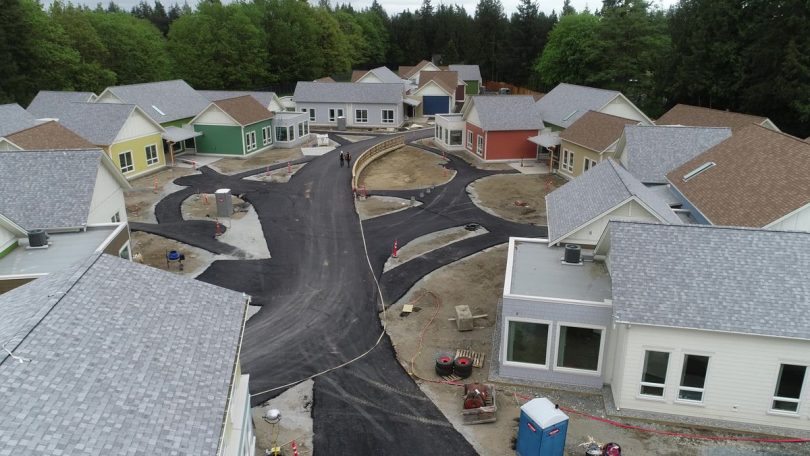The Main Boulevard at the Village, a new development in Langley, B.C., wends through an idyllic scene. Car-free and edged by flower gardens, it starts at something called the Community Building – an airy, skylight space with a spa, salon and fireside café – before passing by clusters of quaint cottages, each painted a unique, rich colour such as terra cotta or teal. The path ends at the Farm – a large vegetable patch with a bright-red barn overlooking a babbling creek surrounded by tall poplar, spruce and birch trees.
Ostensibly, the Village is a suburban fantasy land – the kind of community where many parents would want to raise their kids. It even has a pond, a gazebo and an embarrassment of white picket fences. But the details of the neighbourhood reveal a different, deeper purpose. The cottages are single-storey for wheelchair accessibility, and in fact aren’t cottages at all. Each only looks like a separate home from the outside to create a cozier scale. Within, they are conjoined by communal kitchens, lounges and dining rooms – social spaces for the 72 residents, all of whom have dementia, the most common form of which is Alzheimer’s.
…
Holy Family Hospital, in Vancouver, has been around since 1953 and has plenty of long, indistinct corridors. Although the hospital is in the process of building a new facility, the project will take a number of years and the hospital administrators wanted to do something more immediate for their care of patients with dementia. Recently, they’ve switched to a person-centric model. If someone is not a morning person, they no longer have to get up for breakfast at the crack of dawn. They also started introducing a number of design updates, most of which are small and inexpensive, to improve the current building.
Read the full story in The Globe and Mail.





